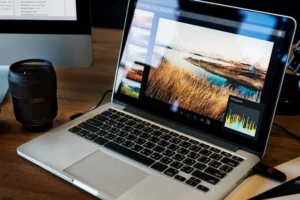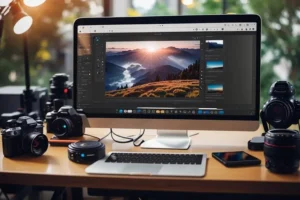Strategies for Optimizing Images and Multimedia
Welcome to our comprehensive guide on optimizing images and multimedia for improved SEO performance. In today’s digital landscape, visual content plays a crucial role in capturing audience attention and enhancing user experience. In this article, we’ll explore effective strategies to optimize images and multimedia elements on your website, ensuring maximum visibility and engagement.
Understanding the Importance of Image Optimization
Visual content enhances the overall appeal of your website and can significantly impact user engagement. Images and multimedia elements not only make your content more visually appealing but also help convey information more effectively. Optimizing images and multimedia is essential for improving SEO performance and attracting more organic traffic. By ensuring that your visual content is properly optimized, you can increase your website’s visibility in search engine results pages (SERPs) and provide a better user experience for your audience.

Choosing the Right File Formats
Selecting the appropriate file format for your images and multimedia content is crucial for achieving a balance between quality and performance. Different file formats have different strengths and weaknesses, and understanding when to use each one is key to optimizing load times and visual quality. Common image file formats include JPEG, PNG, and GIF, each with its own advantages and ideal use cases. By choosing the right file format for your images and multimedia content, you can ensure that they look great while minimizing their impact on page load times.
Optimizing Image Size and Dimensions
Large, uncompressed images can significantly slow down your website’s load time, negatively impacting user experience and SEO rankings. To optimize your images for the web, it’s important to resize and compress them appropriately. This involves reducing both the dimensions and file size of your images without sacrificing visual quality. By optimizing image size and dimensions, you can improve your website’s performance and ensure a smoother user experience for your visitors.
Adding Descriptive Alt Text
Alt text, or alternative text, provides context for search engines and visually impaired users who may not be able to see your images. It’s important to write descriptive alt text that accurately describes the content of your images while incorporating relevant keywords. This not only improves the accessibility of your website but also helps improve its SEO performance by providing search engines with more information about your images. By adding descriptive alt text to your images, you can ensure that they contribute to your overall SEO strategy and provide value to all users, regardless of their abilities.
Utilizing Image Titles and Captions
Image titles and captions provide additional context for your images and can enhance user engagement with your content. Titles and captions can help users better understand the purpose or message of an image and encourage them to interact with it. When crafting titles and captions, it’s important to be descriptive and informative while also being concise and engaging. By utilizing image titles and captions effectively, you can improve the overall user experience on your website and increase engagement with your visual content.
Implementing Lazy Loading
Lazy loading is a technique that defers the loading of non-essential content, such as images, until it’s needed. This can help improve page load times, particularly on pages with a large amount of multimedia content. By implementing lazy loading, you can ensure that your website loads quickly and smoothly, providing a better user experience for your visitors. Additionally, lazy loading can help reduce bandwidth usage and server load, making your website more efficient and cost-effective to operate.
Encouraging Further Engagement with Calls-to-Action
Capitalize on the engagement generated by your optimized images and multimedia content by including relevant calls-to-action (CTAs). Encourage visitors to explore other articles, products, or services on your website to further engage with your brand. By incorporating compelling CTAs, you can increase user engagement and drive conversions. Whether it’s inviting users to read related articles, view product listings, or sign up for a newsletter, CTAs can help guide visitors through your website and encourage them to take action.
In Conclusion
By implementing these strategies for optimizing images and multimedia on your website, you can enhance user experience, improve SEO performance, and drive meaningful engagement. Remember to prioritize image quality, accessibility, and page load times, and continually monitor and refine your approach to stay ahead in the competitive digital landscape.

Contact us:
At flowbig.org, we are dedicated to addressing the most common SEO challenges and providing you with creative and precise solutions. Our team of SEO experts has created a series of short tutorials to help you improve your website’s visibility in search engines.



